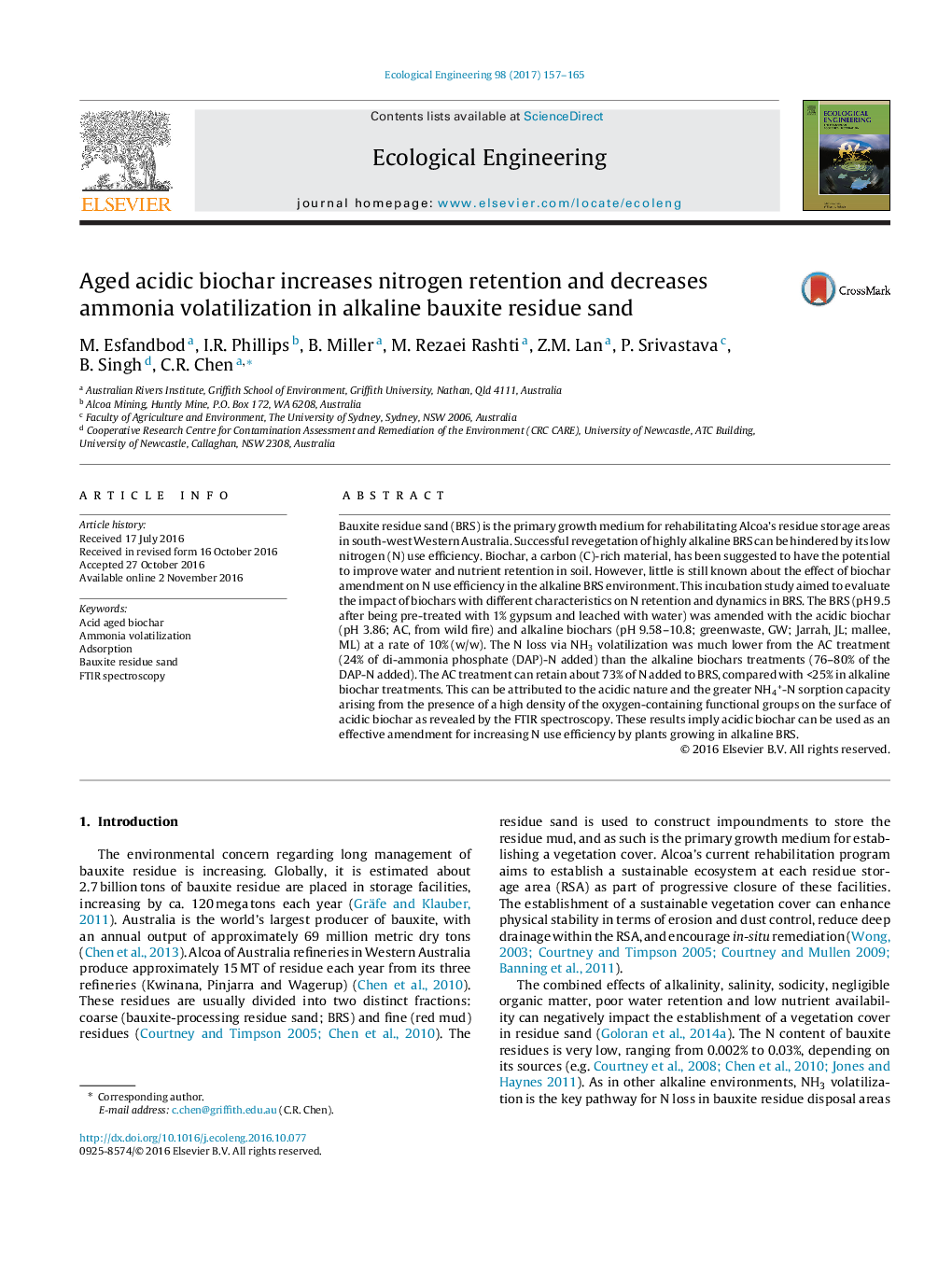| کد مقاله | کد نشریه | سال انتشار | مقاله انگلیسی | نسخه تمام متن |
|---|---|---|---|---|
| 5744065 | 1618001 | 2017 | 9 صفحه PDF | دانلود رایگان |
- Nitrogen (N) use efficiency and retention are low in bauxite residue sand (BRS).
- Acidic and alkaline biochars were tested for their capacity of retaining N.
- Aged acidic biochars can adsorb much more NH4+-N than other biochars in BRS.
- Acidic biochar had a larger amount of oxygen-containing functionalities.
- Acidic biochar can be used as an effective amendment for rehabilitation of BRS.
Bauxite residue sand (BRS) is the primary growth medium for rehabilitating Alcoa's residue storage areas in south-west Western Australia. Successful revegetation of highly alkaline BRS can be hindered by its low nitrogen (N) use efficiency. Biochar, a carbon (C)-rich material, has been suggested to have the potential to improve water and nutrient retention in soil. However, little is still known about the effect of biochar amendment on N use efficiency in the alkaline BRS environment. This incubation study aimed to evaluate the impact of biochars with different characteristics on N retention and dynamics in BRS. The BRS (pH 9.5 after being pre-treated with 1% gypsum and leached with water) was amended with the acidic biochar (pH 3.86; AC, from wild fire) and alkaline biochars (pH 9.58-10.8; greenwaste, GW; Jarrah, JL; mallee, ML) at a rate of 10%Â (w/w). The N loss via NH3 volatilization was much lower from the AC treatment (24% of di-ammonia phosphate (DAP)-N added) than the alkaline biochars treatments (76-80% of the DAP-N added). The AC treatment can retain about 73% of N added to BRS, compared with <25% in alkaline biochar treatments. This can be attributed to the acidic nature and the greater NH4+-N sorption capacity arising from the presence of a high density of the oxygen-containing functional groups on the surface of acidic biochar as revealed by the FTIR spectroscopy. These results imply acidic biochar can be used as an effective amendment for increasing N use efficiency by plants growing in alkaline BRS.
Journal: Ecological Engineering - Volume 98, January 2017, Pages 157-165
